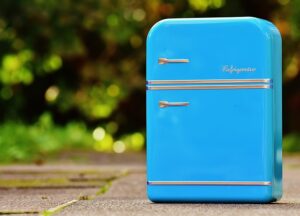If your refrigerator is underperforming, making unusual noises, or leaking water, it's important to address these issues promptly. A compromised seal, low refrigerant levels, a malfunctioning thermostat, or a broken door seal can cause temperature inconsistencies, while unusual sounds like grinding or squealing often indicate compressor or fan motor issues. Regular maintenance by a skilled refrigerator repair expert can help mitigate these problems and extend your appliance's lifespan. For instance, if your fridge is warm or your freezer is defrosting, it could be due to a faulty thermistor, clogged vents, or damaged door seals. Regularly cleaning air vents and coils, and inspecting and replacing worn door gaskets can improve temperature control. If you suspect a water leak, check the defrost drain and water supply lines. For complex repairs like compressor issues or electrical risks, professional refrigerator repair services are recommended to ensure safe and effective resolution. Ensuring your fridge is level can also minimize vibration and noise. Regular maintenance and timely repairs are crucial for preserving the quality of your perishables, maintaining kitchen appliance functionality, and preventing costly future repairs. Keyword: Refrigerator Repair.
When faced with a malfunctioning refrigerator, timely solutions are key to maintaining the safety and quality of your perishables. This article delves into common refrigerator issues and their fixes, guiding you through the process of identifying problems such as excessive noise, temperature control lapses, leaks, and faulty door seals. With a focus on practical refrigerator repair strategies, learn how to address these hiccups effectively to ensure your fridge operates at peak performance, keeping your food fresh without unnecessary energy consumption. Understanding these fixes can save you time, money, and the frustration of spoiled groceries.
- Identifying Common Refrigerator Malfunctions: Signs Your Fridge Needs Repair
- Troubleshooting and Resolving Excessive Noise Issues in Refrigerators
- Addressing Fridge Temperature Control Problems: Keeping Food Fresh or Frozen Correctly
- Diagnosing and Fixing Leaks and Water Pooling Around Your Refrigerator
- Solving Door Seal and Gasket Malfunctions to Enhance Energy Efficiency and Prevent Food Spoilage
Identifying Common Refrigerator Malfunctions: Signs Your Fridge Needs Repair
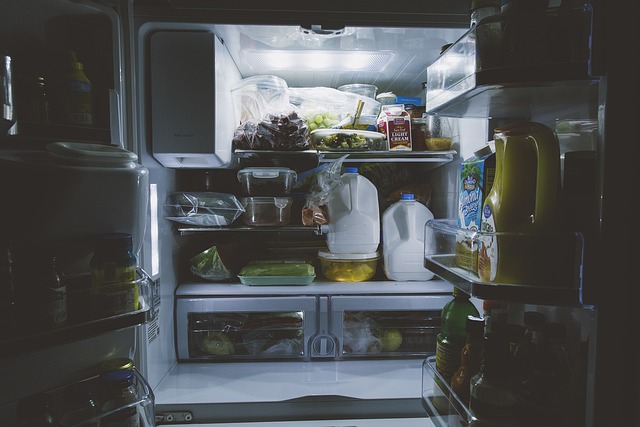
When your refrigerator starts underperforming, timely identification and repair are crucial to maintain the integrity of your food and the efficiency of your kitchen appliance. If you notice an unusually warm interior or condensation on the exterior, it may indicate a malfunctioning seal or a problem with the refrigerant levels within the unit. A consistent failure to reach the set temperature is another clear sign that your refrigerator repair needs attention. It could be due to a faulty thermostat, a clogged condenser coil, or a damaged door seal. Additionally, if you hear unusual noises from the fridge, such as grinding or squealing, it often points to an issue with the compressor or fan motor, which should be addressed by a professional refrigerator repair service. It’s also important to monitor the performance of the ice maker; if it’s not producing ice or is producing ice with impurities, this could be a sign of a clogged water inlet valve or issues with the water supply lines. Regularly scheduled maintenance by a qualified refrigerator repair specialist can help prevent these problems and extend the lifespan of your appliance. Always ensure that any repair work is carried out by trained professionals to avoid further complications.
Troubleshooting and Resolving Excessive Noise Issues in Refrigerators
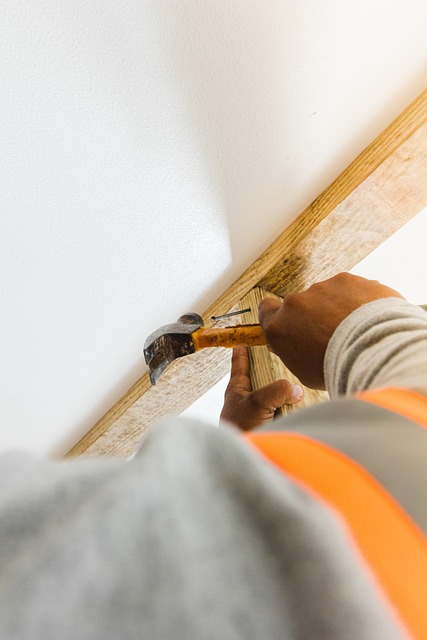
When a refrigerator begins to emit excessive noise, it can be a source of annoyance and may signal that a repair is needed. Common sources of sound in refrigerators include worn out or damaged seals, fan motors, compressor issues, or loose components within the unit. To troubleshoot excessive noise, start by inspecting the door seals for wear and tear. If they are compromised, air can leak out and cause the refrigerator to work harder, resulting in more noise. Cleaning or replacing the seals can resolve this issue, thereby quieting the appliance.
Should cleaning or replacing the seals not alleviate the problem, the next step is to examine the fan motor and its blades. Over time, the motor bearings may deteriorate, causing a grinding or humming sound. To address this, unplug the refrigerator and inspect the fan motor for signs of wear. If you find damaged bearings or a malfunctioning motor, it’s often more cost-effective to replace the entire fan assembly rather than attempting to fix the motor itself. Similarly, if the compressor is the source of the noise, it may require professional refrigerator repair services due to its complexity and the potential for electrical hazards. In all cases, ensuring that the refrigerator is level is crucial for preventing wobbling or vibration that can amplify noise. Regular maintenance and prompt repairs can prevent excessive noise from becoming a persistent issue, maintaining your refrigerator’s efficiency and longevity.
Addressing Fridge Temperature Control Problems: Keeping Food Fresh or Frozen Correctly

When your refrigerator is not maintaining the correct temperature, it can compromise the safety and freshness of your food. If you notice that your fridge is too warm or your freezer is thawing, it’s time for a check-up. The most common cause of improper temperature control in refrigerators is a malfunctioning thermistor, which measures the temperature inside the fridge and adjusts the cooling system accordingly. To address this issue, you may need to replace the thermistor or calibrate its settings. Another potential problem is a clogged or dirty air vent or coil, which can restrict airflow and impede heat transfer, leading to inefficient temperature regulation. Regularly cleaning these components can prevent such occurrences. If your fridge’s temperature fluctuates, it could also be due to doors that do not seal properly, allowing warm air to enter and cool air to escape. Check the door gaskets for wear and replace them if necessary. For those who prefer a professional touch, refrigerator repair services are well-equipped to diagnose and solve these issues, ensuring your food stays fresh or frozen as intended. It’s advisable to handle such repairs promptly to prevent spoilage and maintain the longevity of your appliance.
Diagnosing and Fixing Leaks and Water Pooling Around Your Refrigerator
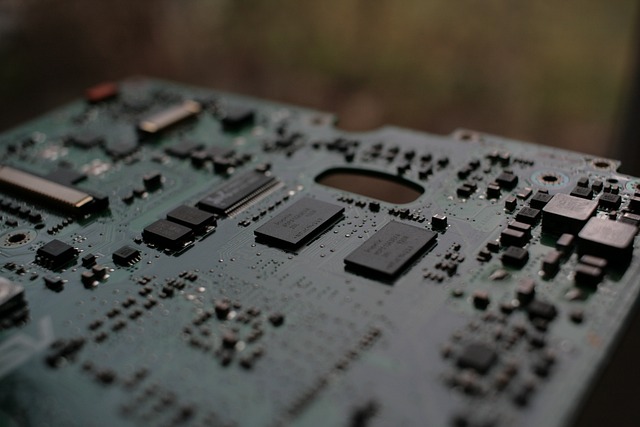
If you’ve noticed water accumulating around your refrigerator or detect a leak, addressing the issue promptly is crucial to maintain the integrity of your kitchen space and ensure the appliance functions optimally. Common causes for such occurrences include a clogged defrost drain, a malfunctioning door seal, or a faulty water supply line. To diagnose the problem, start by inspecting the refrigerator’s door seals. Ensure they are tight and free from debris or buildup that could prevent them from forming a proper seal. If the seals appear damaged or worn, replacing them can often resolve the issue.
Next, locate the defrost drain, usually found at the bottom rear of most refrigerators. Clear any blockages by flushing the drain with warm water or using a thin wire to dislodge any obstructions. If the leak persists and is originating from the water supply line, it may be time for refrigerator repair. This could involve tightening connections, replacing washers, or even replacing the entire line if necessary. Remember, when dealing with water leaks, it’s essential to switch off the water supply and unplug the refrigerator to prevent electrical hazards. For professional assistance, consider reaching out to a qualified appliance repair service to diagnose and fix the issue effectively.
Solving Door Seal and Gasket Malfunctions to Enhance Energy Efficiency and Prevent Food Spoilage
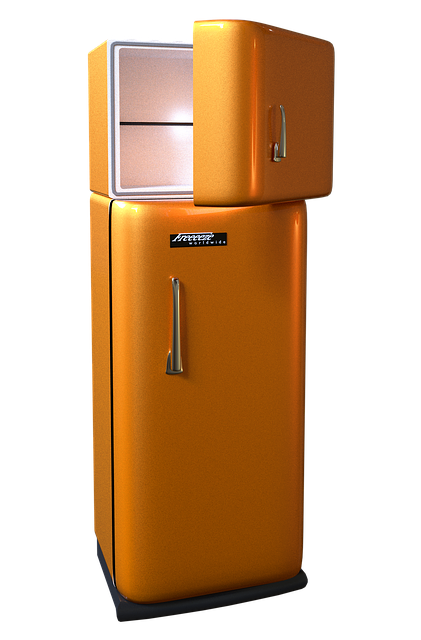
When your refrigerator’s door seal or gasket becomes compromised, it can lead to significant issues with energy efficiency and food preservation. A faulty seal allows cold air to escape and warm air to enter, causing the appliance to work harder to maintain its optimal temperature, which in turn increases your energy consumption and utility bills. To address this common refrigerator problem, a meticulous inspection of the door seal is necessary. Look for any cracks, tears, or deformities that may disrupt its functionality. If you detect misalignment or disconnection at the hinges, carefully realign the gasket or reconnect it to its proper position. In some cases, the seal might be worn out beyond repair and will need replacement. This task often falls under refrigerator repair services, where a qualified technician can swiftly replace the faulty part with a new one, restoring the door’s tight seal and ensuring that your food remains fresh for longer periods. Regularly checking and maintaining the door seal is a proactive step that can prevent more complex issues and save you money on both your groceries and electricity bills in the long run. If you’re not confident in performing this repair yourself, consider enlisting the expertise of a professional refrigerator repair service to handle the issue effectively.
In conclusion, navigating common refrigerator problems can be a straightforward process with the right knowledge. Homeowners often encounter issues such as excessive noise, improper temperature control, leaks, and faulty door seals, all of which can be addressed through targeted refrigerator repair measures. By identifying these malfunctions early and implementing effective solutions, you can extend your appliance’s lifespan, ensure optimal performance, and maintain the quality and safety of your stored food. Whether it’s addressing a noisy condenser fan or replacing a worn-out gasket, understanding refrigerator repair principles empowers you to tackle these challenges confidently. Remember, regular maintenance and prompt problem resolution are key to preventing more complex and costly issues down the line.
